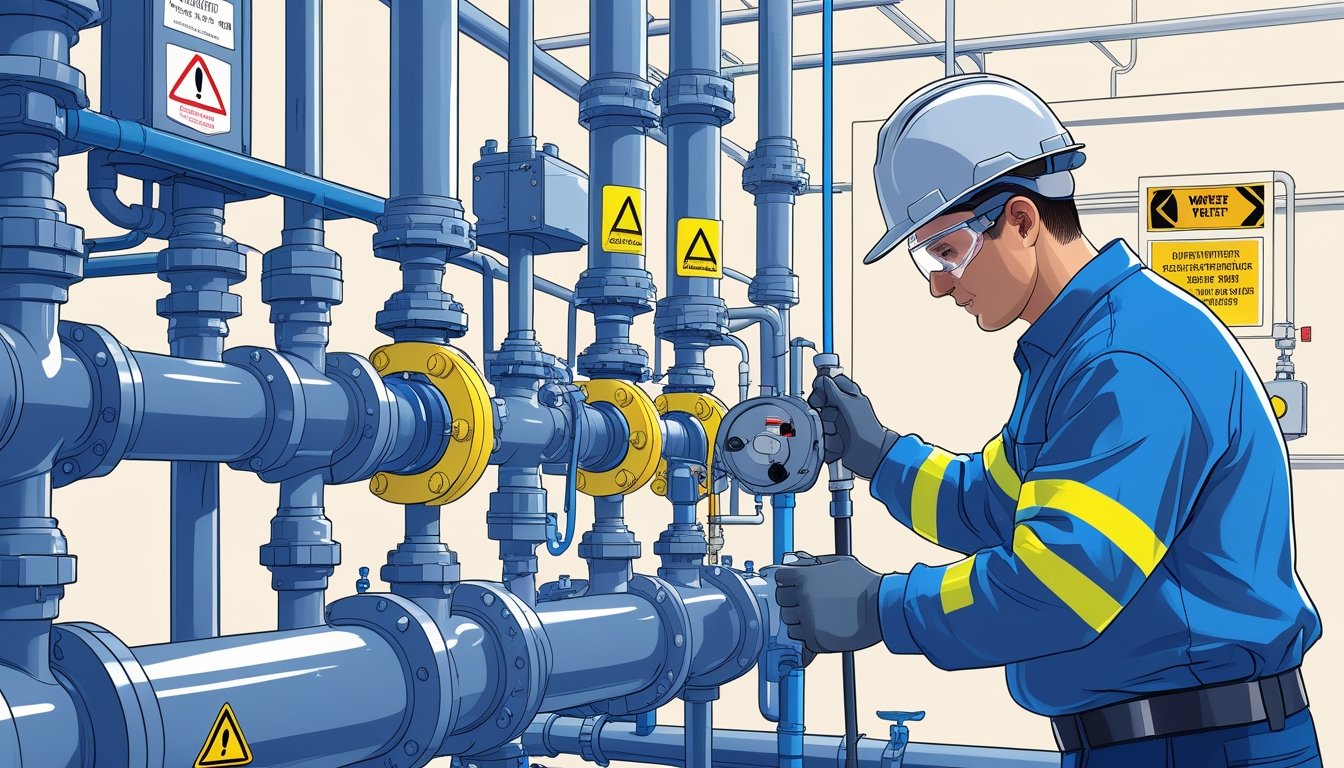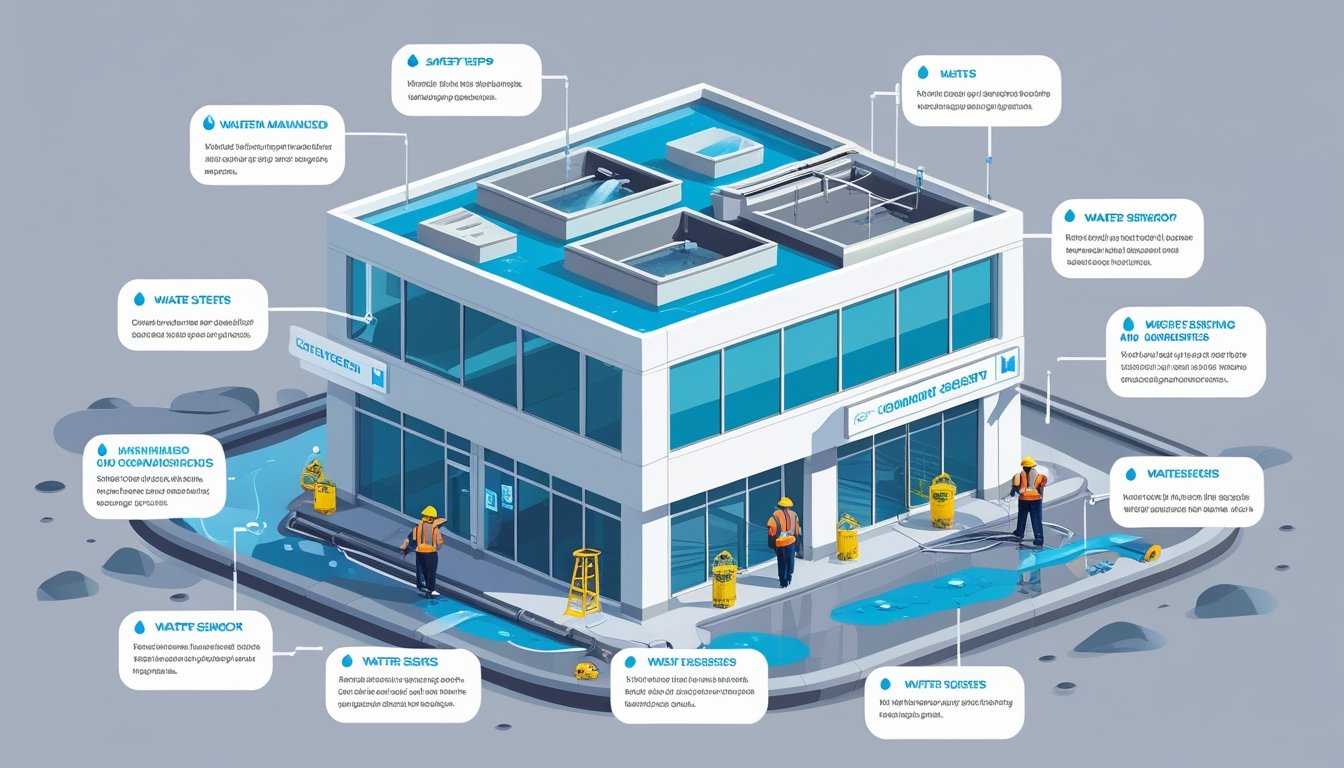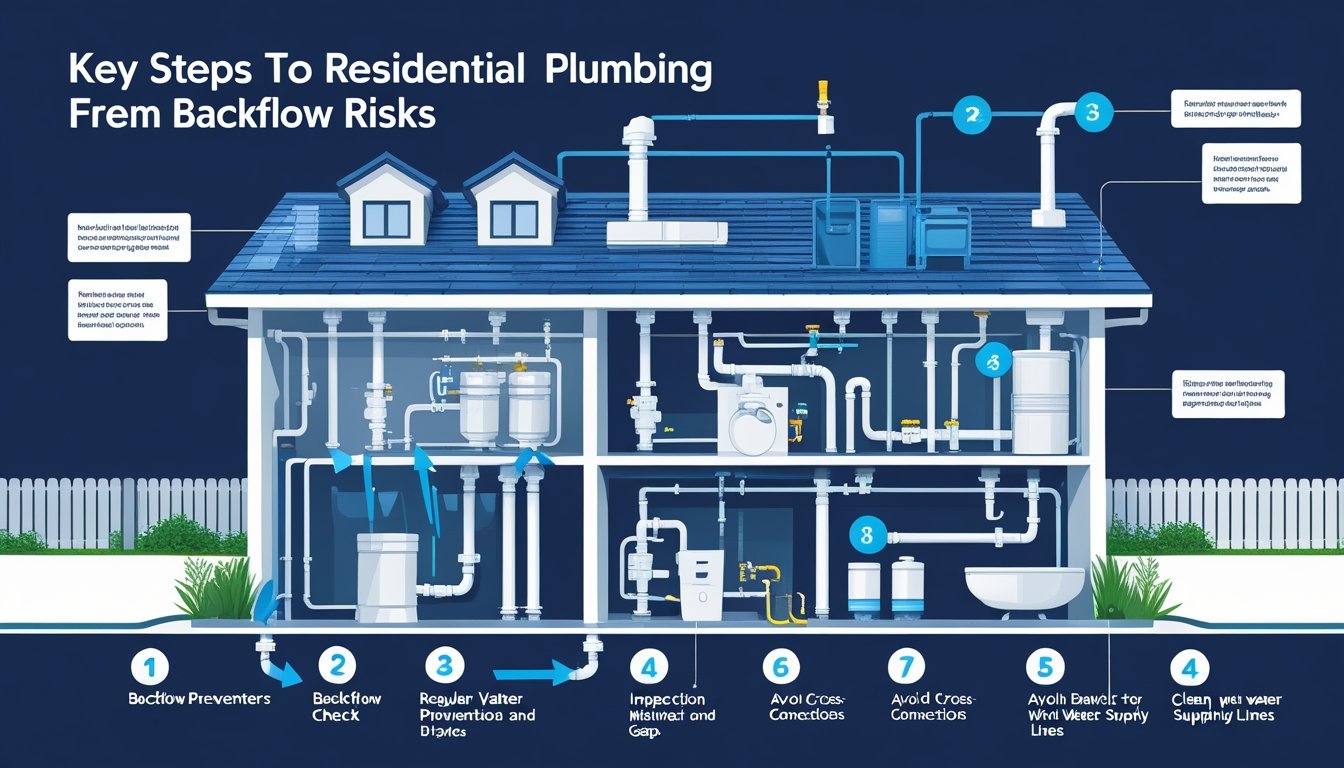Non-potable water plays a crucial role in various applications across homes and industries. Understanding its uses can help you conserve resources and make informed decisions about water management. From irrigation and landscaping to non-potable applications like toilet flushing and washing vehicles, non-potable water can significantly reduce the demand for potable water in your daily activities.
You might be surprised to learn that many activities you engage in daily can use non-potable water. For instance, it can be employed for tasks such as dust control, fire protection, and some laundry operations. Utilizing non-potable water not only helps in conserving clean water supplies but also ensures that you are participating in sustainable practices.
At Pacific Backflow, we believe in preserving our water resources while ensuring that your backflow systems operate efficiently. It's essential to understand your water usage and maintain compliance with local regulations, especially when incorporating non-potable water into your routine.
Understanding Non-Potable Water
Non-potable water cannot be used for drinking, but it serves various essential applications in daily life. Grasping its definition and sources helps one appreciate its role in water conservation and management.
Definition and Characteristics
Non-potable water refers to water that is not safe for human consumption. This type of water can include wastewater, stormwater, and untreated sources, such as rivers and lakes.
It is crucial to understand that while non-potable water is unsuitable for drinking, it can still be used for purposes like irrigation, toilet flushing, and industrial processes. Its treatment and reuse significantly contribute to sustainable water practices.
Non-potable water is often identified by its source and quality. In many areas, regulations dictate its usage, ensuring safety and environmental compliance.
Sources of Non-Potable Water
There are several sources of non-potable water. Common types include:
- Gray Water: This is wastewater from sinks, showers, and laundry that can be reused for irrigation.
- Stormwater: Rainwater collected from roofs and pavements can be harnessed and used for non-drinking applications.
- Wastewater: Treated municipal sewage can be recycled for purposes like cooling systems or landscaping.
- Surface Water: Untreated water from lakes, rivers, and reservoirs can be utilized, especially in agricultural settings.
Understanding these sources highlights how communities can better manage water resources. Using non-potable water effectively can boost efficiency and support environmental sustainability. For reliable backflow prevention and testing to protect your water supply, consider the expertise of Pacific Backflow.
Primary Uses of Non-Potable Water
Non-potable water serves various essential applications that support both agriculture and urban environments. Understanding its primary uses helps you appreciate its role in conservation efforts and resource management.
Irrigation for Agriculture and Landscaping
Non-potable water is widely utilized in irrigation systems for agriculture and landscaping. This includes the use of treated wastewater, which is often rich in nutrients beneficial for plant growth. It can be sourced from grey water systems or recycled water specifically designated for irrigation.
Common applications include watering crops, gardens, and public green spaces. This practice conserves potable water, reducing overall demand on drinking water supplies. By using non-potable sources, you can maintain healthy landscapes and agriculture while leveraging an abundant resource.
Industrial Processes
In industrial settings, non-potable water is integral for various processes. It is used in activities such as cooling systems, equipment cleaning, and as a component in manufacturing. Utilizing non-potable water reduces the strain on local freshwater resources and often allows industries to take advantage of otherwise wasted water.
Industries often recycle their wastewater for these purposes, ensuring they operate sustainably. This not only saves costs but also adheres to environmental regulations that promote responsible water use in industrial applications.
Toilet Flushing and Sanitation
In residential and commercial buildings, non-potable water is effectively used for toilet flushing. Grey water, which includes discharge from sinks and showers, can be collected and redirected for this purpose. This method significantly lowers the amount of potable water consumed daily.
Furthermore, non-potable sources can be utilized in sewer systems and sanitation processes, contributing to a more sustainable sewage system. By treating wastewater for such applications, you directly support local efforts to manage water resources responsibly.
Municipal and Commercial Applications
Non-potable water plays a significant role in various municipal and commercial applications, contributing to sustainable practices and resource management. It is primarily harnessed for street cleaning, dust control, and in cooling systems within industrial settings.
Street Cleaning and Dust Control
Non-potable water is frequently used for street cleaning and dust control in urban areas. By utilizing treated non-potable sources, municipalities reduce reliance on potable water, conserving this vital resource.
The use of non-potable water for street cleaning helps maintain cleanliness and safety on roads. Regular washing of streets minimizes dust, which can lead to respiratory issues, particularly in densely populated areas.
Additionally, employing non-potable water for dust suppression during construction projects significantly reduces environmental impact while ensuring adherence to local regulations. This method aids in creating a healthier living environment for residents.
Cooling and HVAC Systems
In commercial settings, non-potable water is essential for cooling and HVAC (Heating, Ventilation, and Air Conditioning) systems. These systems often require significant amounts of water for cooling towers and heat exchangers.
Utilizing non-potable water for these applications not only conserves potable supplies but also lowers operational costs. This practice allows facilities to operate efficiently while maintaining regulatory compliance.
Moreover, implementing non-potable water systems in HVAC setups minimizes the strain on local water resources. Companies that choose this sustainable approach demonstrate their commitment to responsible water use and environmental stewardship.
For businesses in San Diego County seeking to adopt these practices, reliable backflow testing and installation services like those from Pacific Backflow can ensure compliance and system effectiveness.
Environmental and Sustainability Benefits
Utilizing non-potable water offers significant environmental advantages. It plays a key role in conserving valuable resources and alleviating stress on potable water supplies, leading to more sustainable water management practices.
Water Conservation Efforts
Using non-potable water for various applications dramatically reduces the demand for fresh water. This includes irrigation for landscaping, agriculture, and recreational areas. By implementing non-potable sources, communities can reclaim wastewater and treat it for safe reuse.
The practice minimizes the extraction of water from natural sources, such as rivers and lakes, helping protect local ecosystems. For instance, using treated wastewater for irrigation supports vegetation without depleting precious drinking water reserves.
In addition, you can participate in local programs that promote non-potable water use, enhancing community initiatives aimed at water sustainability.
Reducing Pressure on Potable Water Supplies
Shifting to non-potable water significantly eases the pressure on drinking water systems. This is crucial as population growth intensifies the competition for limited water resources.
When you choose non-potable solutions, you not only help sustain water quality for essential uses but also reduce treatment costs associated with large volumes of potable water. For example, using recycled water reduces the need for extensive treatment processes, making water management more efficient.
By investing in systems that integrate non-potable water, you contribute to a more resilient water supply. Pacific Backflow supports this transition by ensuring backflow prevention systems are well-maintained, safeguarding your water supply while promoting sustainable practices.
Safety Considerations and Regulations
Understanding how to safely manage non-potable water is essential for protecting public health and ensuring compliance with regulations. The following sections discuss the critical aspects of separating non-potable water from drinking supplies and the treatment standards necessary to maintain its safety.
Separation from Drinking Water
It is crucial to maintain a clear separation between non-potable and potable water systems. This prevents contamination and protects public health. Each state or region may have specific regulations that mandate how these systems should be set up.
For instance, non-potable water must not be used where there is a risk of cross-connection with drinking water. Warning signs and colored labeling, such as yellow or purple, often indicate non-potable water systems. By ensuring these distinctions, you help to mitigate the risks of accidental ingestion, which can lead to serious health issues.
Regular inspections by certified professionals, such as those from Pacific Backflow, can help you maintain compliance with these essential regulations. Implementing backflow prevention measures is also crucial in reducing the risk of contamination from non-potable sources.
Treatment and Quality Standards
Non-potable water often requires treatment before it can be safely used for specific applications. Regulations set forth by organizations, such as OSHA, define the quality standards that must be met.
For example, while some non-potable water can be reused for irrigation or industrial processes, it should be free from harmful pathogens and contaminants. Testing for biological and chemical hazards is essential, ensuring that the water does not pose a risk to users or the environment.
To meet these treatment and quality standards, businesses typically rely on experienced service providers. Pacific Backflow offers comprehensive testing and repair services that help keep non-potable water systems compliant and safe. Regular evaluations and adherence to local regulations are vital in ensuring that non-potable water does not become a health hazard.
Frequently Asked Questions
Understanding non-potable water usage is essential for various applications. This section addresses common inquiries regarding its safe applications, potential risks, and effective management practices.
Can non-potable water be safely utilized for irrigation?
Yes, non-potable water is frequently used for irrigation purposes. It can effectively water lawns, gardens, and crops, provided that local regulations are followed to ensure safety and effectiveness.
Is it permissible to use non-potable water for flushing toilets?
Using non-potable water for flushing toilets is widely accepted. This application helps conserve potable water while still maintaining hygiene standards in residential and commercial properties.
What precautions should be taken when using non-potable water for cleaning purposes?
When using non-potable water for cleaning, it is crucial to avoid contact with food and drinking-related items. Ensure that surfaces are rinsed with potable water afterward to eliminate any potential contaminants.
Are there specific uses of non-potable water in industrial settings?
Industrial settings often utilize non-potable water for processes such as cooling machinery, cleaning equipment, and flushing systems. This practice helps save valuable potable water resources without compromising operational efficiency.
What are the risks associated with accidental ingestion of non-potable water?
Accidental ingestion of non-potable water can lead to health complications. Contaminants present in non-potable water may cause gastrointestinal illnesses or other health issues, making it essential to keep it away from drinking sources.
How can non-potable water be treated for safe use in various applications?
Treating non-potable water for specific applications may involve filtration, disinfection, and chemical treatment. Professional services, like those offered by Pacific Backflow, ensure compliance with safety regulations and effectiveness in treatment methods.











